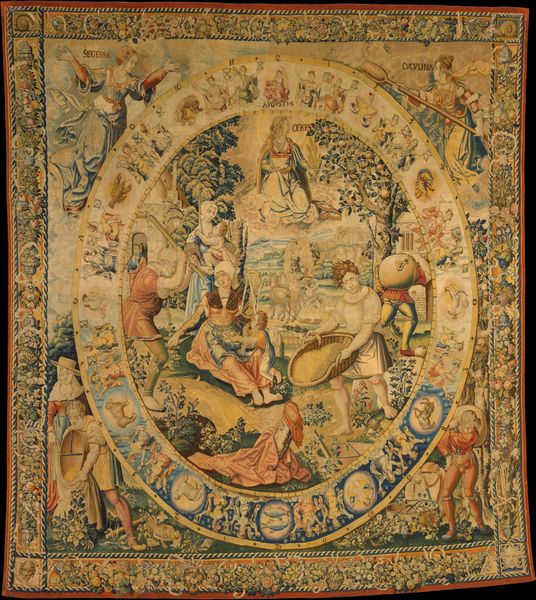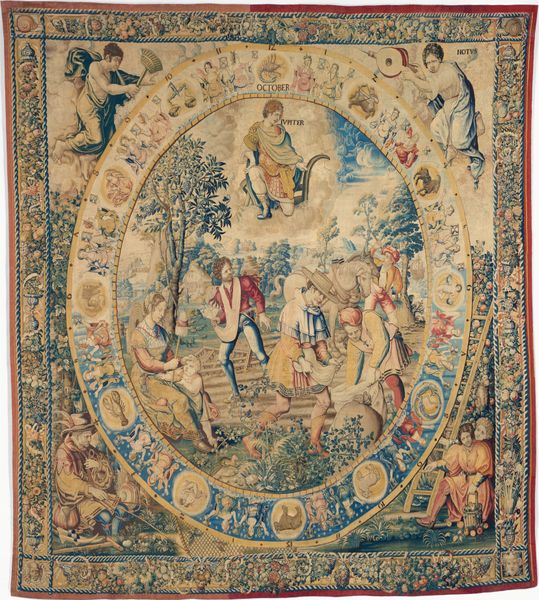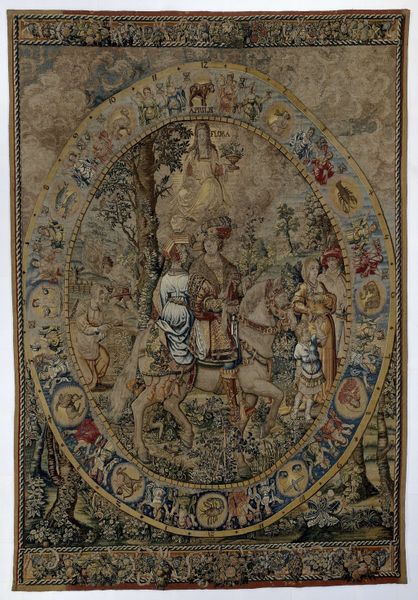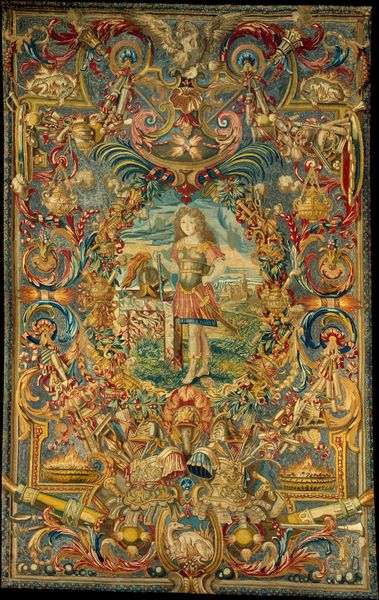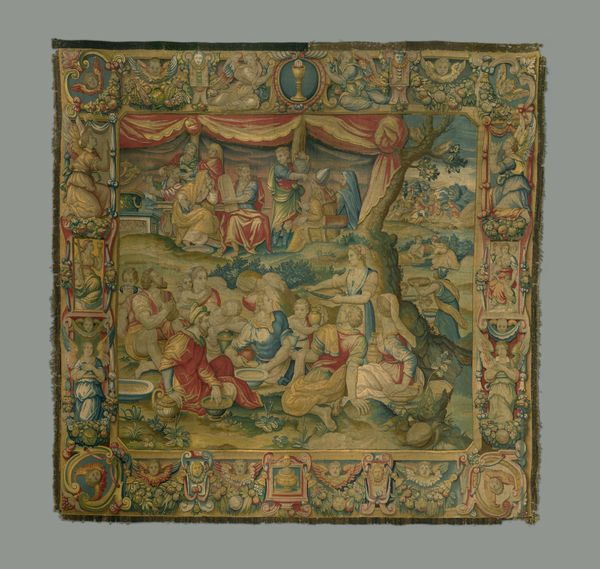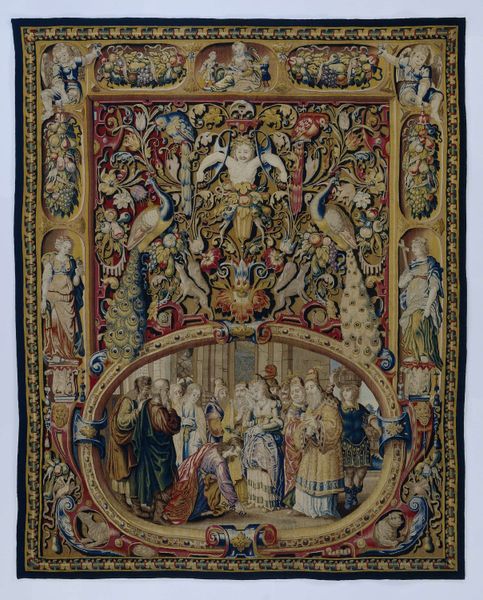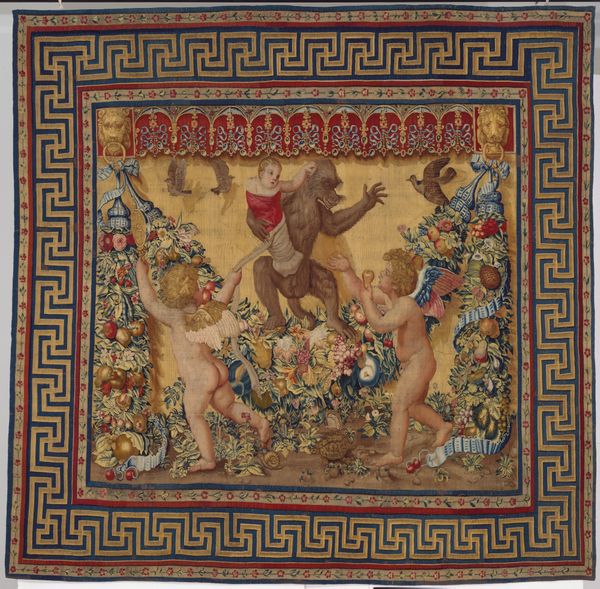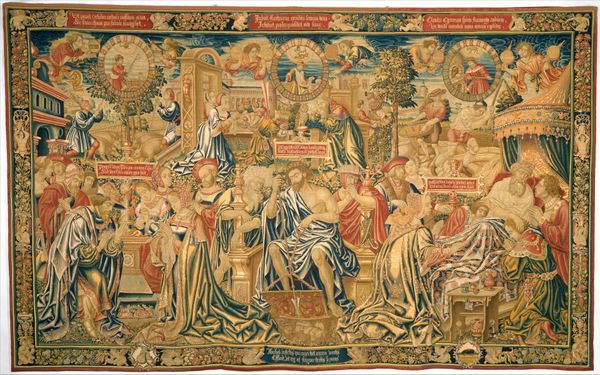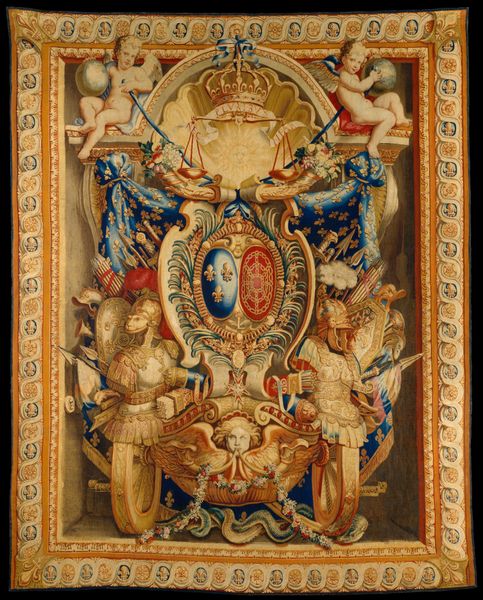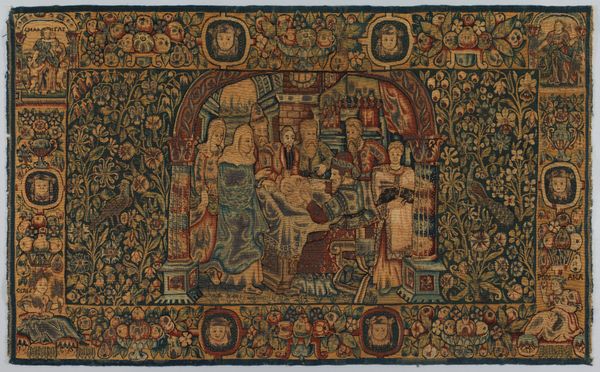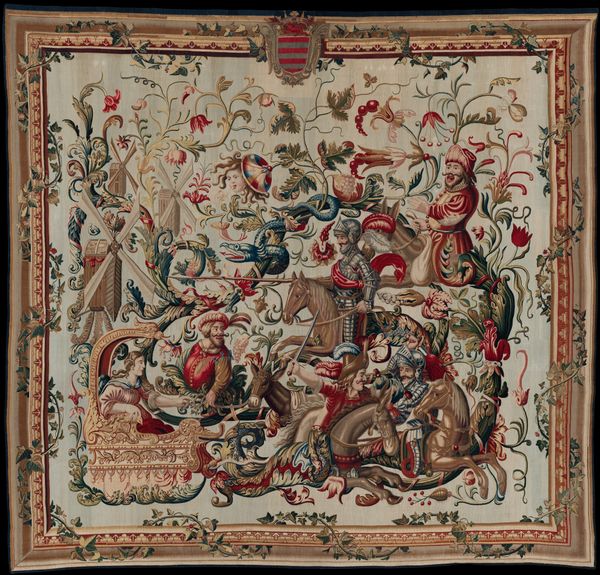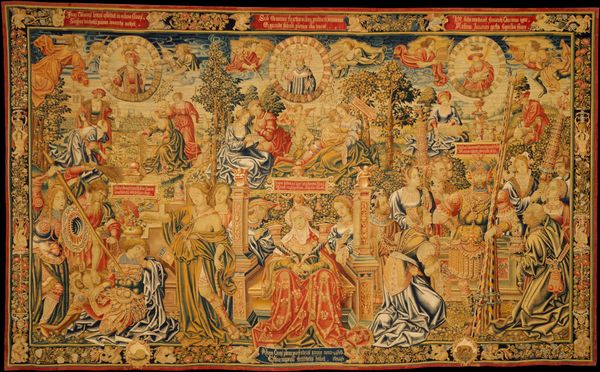
weaving, textile
#
medieval
#
narrative-art
#
weaving
#
textile
#
figuration
#
text
#
genre-painting
#
history-painting
#
northern-renaissance
#
stained glass
Dimensions: 402 × 427.3 cm (158 × 169 in.)
Copyright: Public Domain
This is February from The Medallion Months, woven in the 16th century after a design by Bernard van Orley. It's made from wool and silk, and the colors are all created with natural dyes. Tapestries like this were incredibly labor-intensive. They were woven on looms by skilled artisans, who meticulously followed a cartoon, or painted design. The tight weave and intricate detail speak to the immense amount of work involved. Silk gives a luxurious sheen to the imagery. The subject matter, depicting the activities associated with the month of February, places the tradition of tapestry-making itself in the middle of courtly life. This tapestry is a testament to the skilled craftsmanship of the weavers, but it also reflects the social and economic context of its creation. Tapestries like this were status symbols, commissioned by wealthy patrons to decorate their homes and display their power. The very materials speak to a global trade network, with wool from local sheep and silk imported from the East. Considering the materials, making, and context of this work challenges traditional distinctions between fine art and craft, and helps us to understand the full meaning of this object.
Comments
No comments
Be the first to comment and join the conversation on the ultimate creative platform.
